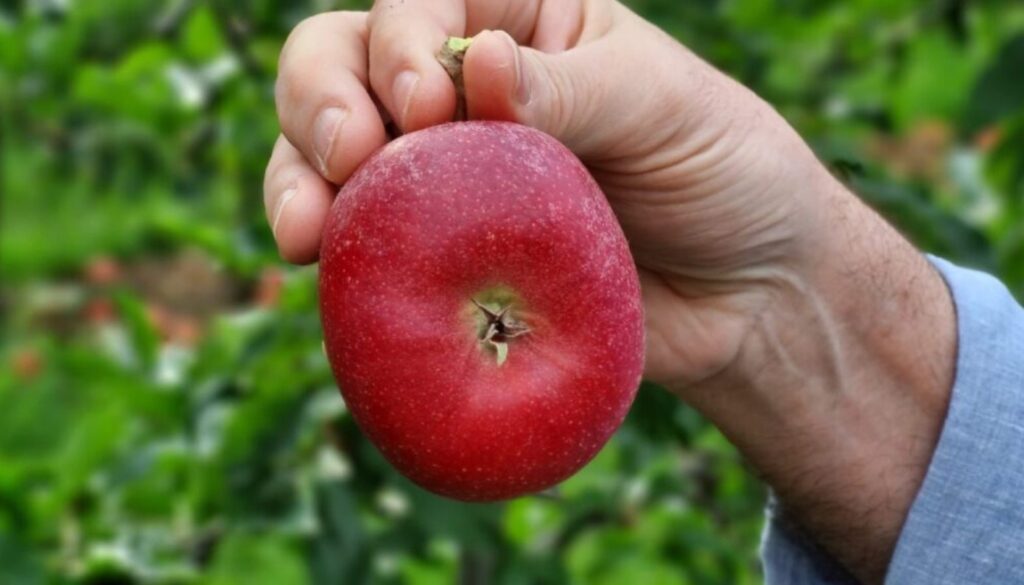The Chilean apple industry experienced years of glory, becoming the second-largest exporter of apples in the world in 2006, competing with Italy and the United States.
This scenario has changed in recent years, but apparently, the situation is reversing, according to Carlos Diez, head of operations of Agrícola Linares, part of Unifrutti, who said: “Prices have been improving which allows us to be hopeful about a rebound of our apple industry.”
He added that there is interest in new plantations being renewed and more being planted. “We must always consider a renewal of 10 to 15% of orchards with top varieties and high density to maintain the desired volumes.”
He highlighted that development is taking place in Chile, “there is a lot of technology in plantations with high density and mechanization”.
Regarding the producing areas, he said that the main apple-growing area is Curicó, in the Maule region, and extends to the southern area, from Linares to Traiguén, in the south of Chile.
He also pointed out that in Chile many new varieties are being tested with better colors and improved yields.
Technical tour
A few weeks ago, Diez participated in a technical tour of Chilean producers to Italy to learn about the latest advances in apple planting and harvesting systems. He explained that Chile has always been at the forefront of technology “and we can bring new things that come out of the tours, as our company aims to empower technical teams by adopting new technologies, mechanization, and rootstocks.”
He pointed out that the technical tour was born from conversations that have been carried out with Agromillora, “where we started with a trip to Brazil in January, getting to know high-density plantations, with the rootstocks that are being used today, which allow for much faster replanting and also have a certain tolerance to insects”.
He added that this led to the creation of a travel program to seek technology and improvements for the Chilean apple industry. “This is how the trip was born together with Agromillora, Copefrut, and Casas Patronales both in Brazil and Italy, touring apple plantations.”
Italy
Diez commented that the apple industry in Italy is based on agricultural cooperatives. “The orchards are much smaller in hectares, unlike what we have here in Chile, as they are more extensive and a producer can have up to 800,000 hectares or more.”
He described that during the tour they were able to see high-density orchards and mechanization, in addition to the use of rootstocks in their different series, with soil devices and different varieties with their behavior.
In that sense, he said that the objective was achieved. “The truth is that Italy is working very hard on high density, they are with a new development of the formation of these apple tree plantations, either between 1 to 10 trees per plant row; this method initially requires more labor but achieves similar production levels to those in Chile.”
There are also trials that today are well above what is produced in Chile since they are between 80 to 100 tons on average in some varieties.
He added that “they have a lot of trials in the development of applications with the same irrigation equipment, so they no longer use tractors and labor, reducing the cost. They are very strong in mechanization for different tasks, which helps to slightly reduce time and labor costs.”
Renewed industry
Undoubtedly, knowing and observing during the tours is a relevant link for the new awakening of the apple industry in Chile.
According to Agrícola Linares’s head of operations, alongside the importance of technical tours, price and profitability are key, “because if a crop ceases to be profitable, nobody will be enthusiastic about replanting or planting, even if they have a cold storage facility to do so.”
In addition, he said that “as more than 50% of the hectares we had planted in Chile have decreased, today there is a need for apples and in our case, as a company, we are very much focused on the Latin American market.”
He emphasized that Latin America is eager to consume apples, “therefore there are niches where we can place the fruit and that are business for us as an industry.”
In Diez’s opinion, the apple industry will continue, since some of the main companies have cold storage facilities, which they have to use and will continue in the business, as well as serving to complement the range of fresh fruit throughout the year. “You have to think that today apples can be stored for over 12 months, allowing placement in the off-season of each of the countries that require fruit or in the period that is most profitable,” he said.
He added that they are looking for new markets, “so we have to comply with certain parameters of quality, color and that is what one seeks in these tours to Italy, in addition to knowing new varieties that meet in various markets and can have a better profitability.”
Challenges
Diez emphasized that quality is paramount. “The production in the fields can have a good yield, but we must meet these quality parameters, whether in the condition of the fruit, that it arrives well at its destination, or the desired color for each of the markets.”
He concluded by saying that, in this sense, working together with the fields by carrying out studies with the universities to be able to keep the fruit in better condition, “is very important.”
Source link : http://www.bing.com/news/apiclick.aspx?ref=FexRss&aid=&tid=671fa976bfa340dd8c1db8e4a9e03cb7&url=https%3A%2F%2Fwww.freshfruitportal.com%2Fnews%2F2024%2F10%2F28%2Fhow-a-once-leading-apple-exporting-country-is-trying-to-bring-back-its-years-of-glory%2F&c=13064062509740263755&mkt=en-us
Author :
Publish date : 2024-10-28 00:10:00
Copyright for syndicated content belongs to the linked Source.
